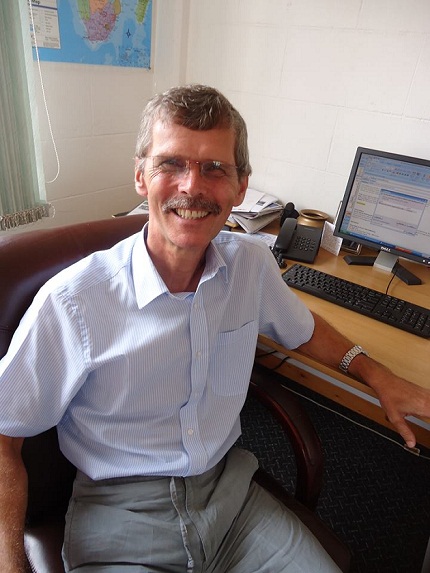Confronting tough questions
Cancer treatment remains one of the costliest and hard to manage, yet records show that 80% of all people diagnosed with cancer in Uganda die. Only 20% survive.
So do the doctors know that a patient is dying but dubious keep recommending test after test and surgery and `milking’ the caregivers for money? Or are the doctors genuinely trying to save a life?
Should caretakers continue to borrow money to enroll their relatives for more treatment and possible survival –even if for only a fewmore months – and leave their family in debt and poverty? Or should they let patients lie back on their death bed and wait for their time to come?
Cancer diagnosis and treatment force caretakers to confront these tough questions and make decisions under immense emotional pressure.
Benjamin Mwesige, a pharmacologist at the Cancer Institute, says the biggest problem for doctors is that the stages of cancer management and treatment are not easy to define. The same is true of the cost of care.
“We only estimate how long the treatment will take and what drugs the patient will be using at that particular time of the visit,” he said.
For that, the doctors plan costs depending on the purpose of patient’s visit, the type of cancer they are treating, the stage it is at, and whether the intention of treatment is to control pain or to cure the cancer. He says there is, in fact, no standardized price for cancer drugs in private hospitals in the country. He says even when services and drugs are free in public facilities, such as UCI, patients still incur cost of transport, feeding, and supplementary requirements.
For Grace Kiwanuka, the Director of Uganda HealthCare Federation, no one should be made to make the decision to stay home to die. Dr. Ian Clarke who founded International Hospital Kampala agrees with Kiwanuka. He is a cancer survivor and a firm believer in the phrase, ‘where there is life there is hope’.
He says as medicine has become more sophisticated, the results of cancer treatment have drastically improved, especially for patients that use the most up to date and proven treatments.
Clarke says even with large bills, the patient’s family and friends feel that at least they have done all they can. He says, in fact, there are cases where life is prolonged. But Clarke says the bigger problem is that diagnosis which is the first step towards treatment has become more complex and uses machines and techniques not available in Uganda.

For this reason those who require specialised care have to spend even more by opting to go abroad. He mentions interventions such as PET CT and PETMRI scans which use radioactive material with a short half-life and must be manufactured in the country or at the very least in the region, to beat the short half lives that render the materials useless within six hours.
Clarke says the manufacture of this radioactive material requires a machine called a cyclotron which is very expensive and has not yet been installed anywhere in the region – not even by very profitable hospitals like Nairobi Hospital.
Clarke is concerned that despite the high costs, Ugandans are not getting the best care. He says, for instance, the radiotherapy machine at the Cancer Institute is a single source radiation machine which is not very specific in deploying the radiation.
He says a Linear Accelerator is a better machine. But it is also more expensive with full-treatment costing up to Shs16 million. The poor cannot afford it. Clarke says, however, some hospitals in India and others abroad have taken advantage of this phrase and encouraged families to send their relatives there even when there is a huge bill and no real hope.
Clarke blames Ugandans.
“Ugandans have little confidence in their own medical facilities and even if they are told by a Ugandan doctor that there is little which can be done, they prefer to go abroad. This is why we hear of so many high profile people who have died abroad,” he says.
What should be done? In terms of what Uganda should be done to reverse this, Clarke says there should be a coordinated approach between both public and private facilities where roles can be shared.
“The investment in a linear accelerator that costs at least $5 million is a stumbling block for a private provider especially if one knows that patients will not be able to afford the treatment, while the rich people will still go out of the country,” he says.
He advises the government to allocate a subsidy either to the setting up of the equipment or by subsidizing the patient bills.
Kiwanuka sticks to a private sector driven plan based on current infrastructure. She says members of the public should be mobilised to pool funds towards a `Critical Illness Insurance’ scheme. She says this requires large populations to make contributions.
For now, however, the government’s focus is on prevention and sensitization to ensure that people go for checkups and enroll early on treatment, according to programme manager Mutungi , for cervical cancer which is one of the commonest in the country, vaccination is being offered to 10 year old girls against the causing human papilloma virus (HPV) which is also a risk factor for cancers of the throat and the liver.
Whatever the strategy, Kiwanuka says; Ugandans should not be reduced to selling their property or giving up hope and waiting to die when they get cancer.
 The Independent Uganda: You get the Truth we Pay the Price
The Independent Uganda: You get the Truth we Pay the Price




Africa is still in trouble. A surgery to a critical patient costing UGx 6 million?
The world Health organisation has to step in and provide funding but most importantly the doctors raises have to be increased and the officials monitoring the funds that might be provided so that they don’t end up in the pockets of corrupt officials.